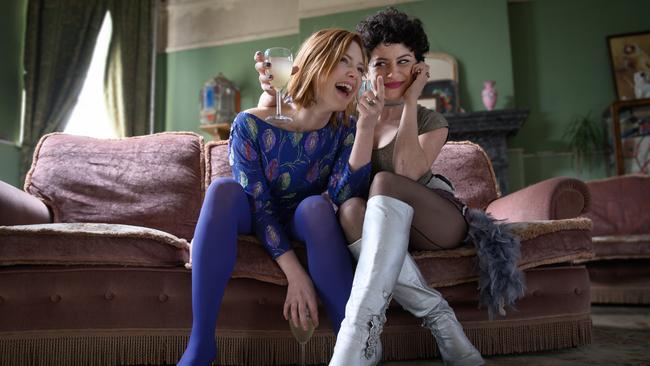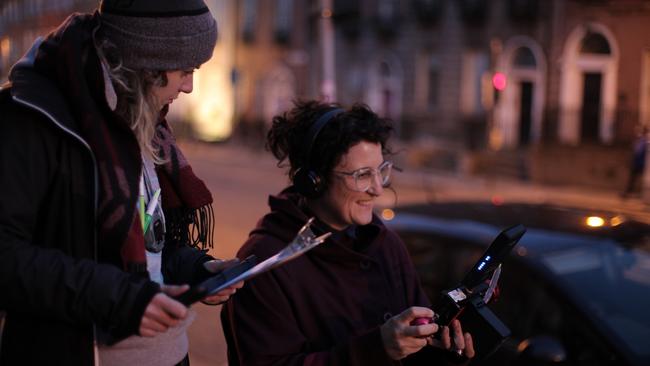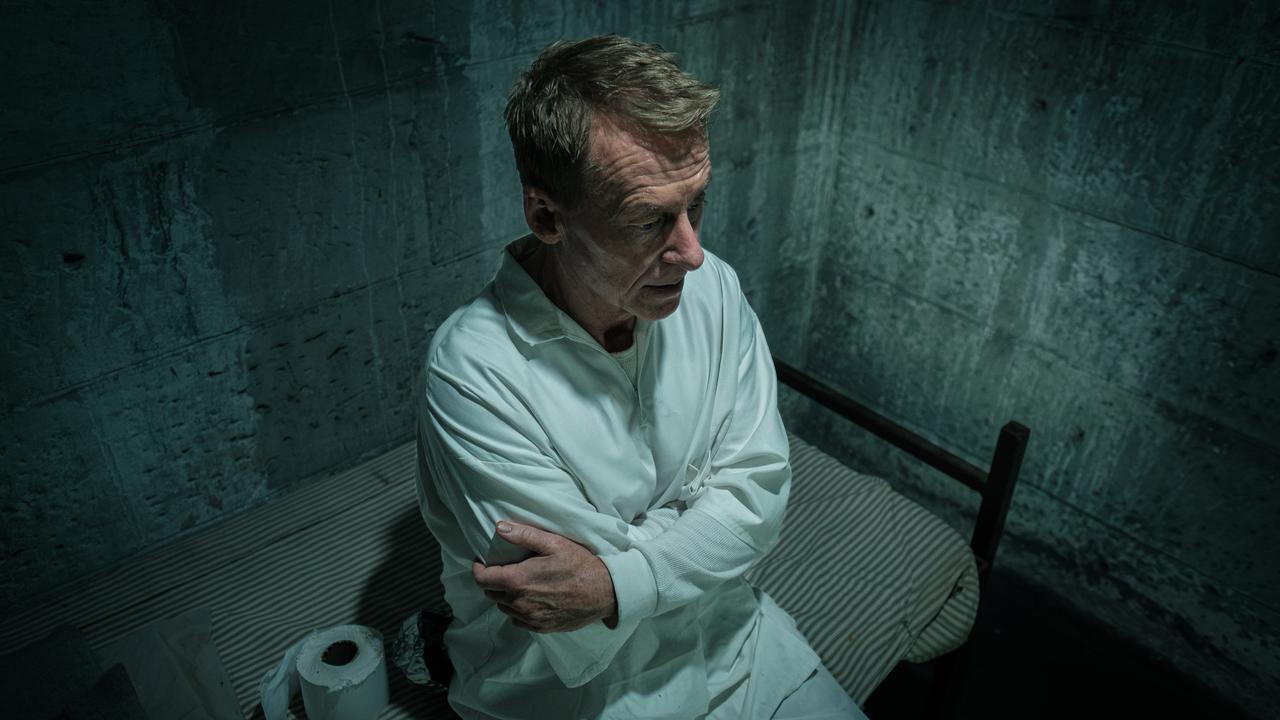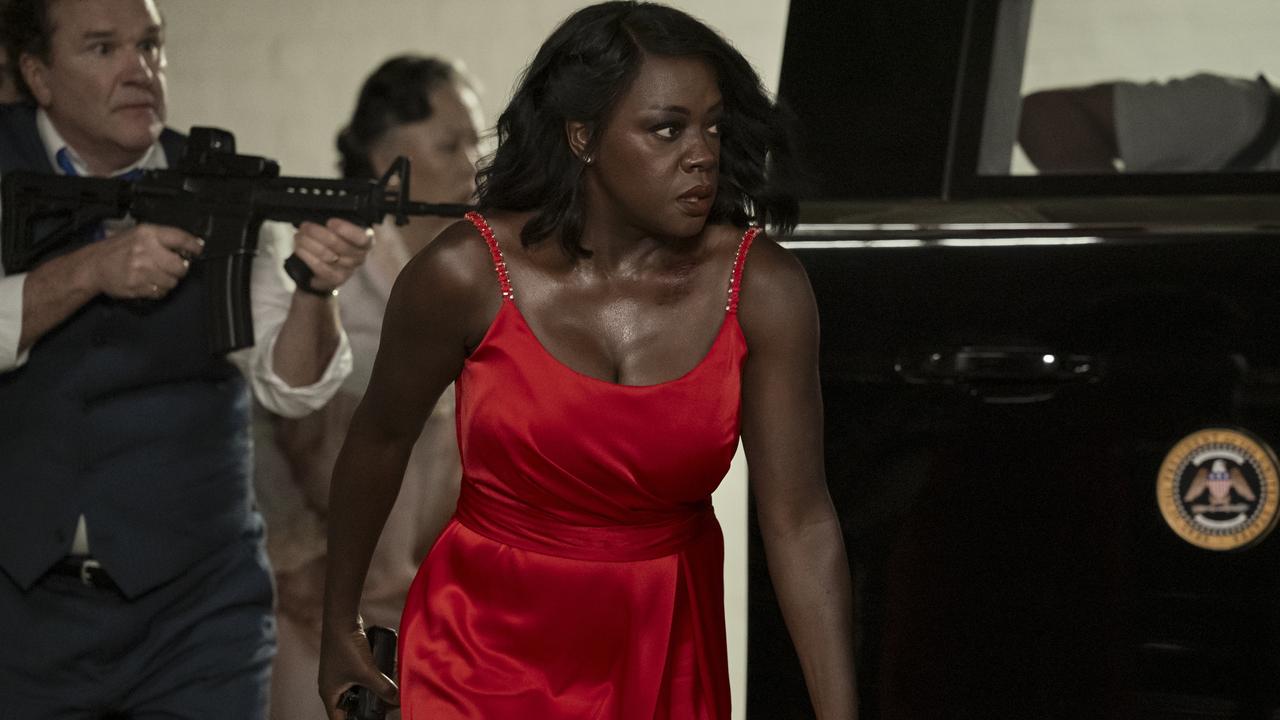Friends in heat of the moment
Sophie Hyde’s Animals is a story of friendship, intimacy and expectations, of sharp exchanges and brittle arguments.

Sophie Hyde’s Animals is a story of friendship, intimacy and expectations, of sharp exchanges and brittle arguments. It’s also a film about what things feel like in the moment — tactile, immediate, painful, messy.
Animals is adapted by British novelist Emma Jane Unsworth from her novel of the same name. And for Australian filmmaker Hyde (52 Tuesdays, The Hunting), one of the most distinctive aspects of the book was the way it dealt with the body. When she was reading it, Hyde says, “I felt the hangovers they had, I felt (the characters’) desires for different people”.
That physical specificity, she says, is rarely explored. “And yet, you know, day to day, our bodies rule us: we need to eat, we need to go to the toilet, we’re tired. It’s such a big part of our human experience and we don’t explore it much in stories.”
The element she most wanted to carry over from book to film was that specificity, “that feeling of desire and competing desires” experienced at the same time.
The pair at the centre of Animals are Laura (Holliday Grainger) and Tyler (Alia Shawkat), housemates, partners in excess, co-conspirators and contrasts in style. They’re both living in Dublin, doing casual work in bars and cafes, and living life after hours in a hedonistic high-speed blur.
Laura dreams of being a writer. She keeps a notebook, she talks longingly but also wryly about her ambitions.
On the surface, when we meet her, she’s as committed as ever to pleasure, excess and sardonic takedowns. Yet doubts are beginning to seep in. She’s attracted to Jim (Fra Fee), a classically trained pianist. Perhaps he offers her an example of how to think about her future. Perhaps he is her future.

Animals is a story of two close friends, but it is told from Laura’s point of view. The first-person narrative isn’t necessarily obvious. “One of the challenges of developing the screenplay was to convey this without a voiceover,” she says.
“We see Tyler through Laura, as a muse, and as a very funny performative kind of character. And then we start to see under her a little bit” — to reconsider, non-judgmentally, how she presents herself — “but we don’t go in and follow her story”.
Grainger, who has often been seen in period works (Great Expectations, The Borgias, Anna Karenina) embraces the energy and vulnerability of Laura. Shawkat (Arrested Development, Search Party) brings a bravado, a detachment and a decisiveness to the enigmatic Tyler, an American who has lived for several years in Dublin. They are a vivid, playful combination. “I wanted the two actors to feel surprising in their own roles and surprising together,” Hyde says.
The novel was set in Manchester, rather than Dublin, a shift in location that came quite late in the process. The screenplay went through many changes, but transferring the action to Dublin affected only a few aspects of the script, Hyde says. One of the major differences it made was the casting: the two leads were already on board, but everyone else was cast quite late, after the filmmakers arrived in Dublin.
To play Jim, the pianist, Hyde cast Fee, an experienced performer in musical theatre, who could play piano and sing. He was the right actor for the role, Hyde says: it was helpful that he could play well enough to perform one of the piano pieces himself, but it wasn’t essential. If she’d found a dancer who suited the part better, she would have changed the character to reflect this.
Jim seems to offer Laura a model of how to live differently, and how to be an artist. “He has dedication and talent,” Hyde says, “and the craft and practice that turns talent into something, but also, really importantly, he’s not a creator, he’s an interpreter.” But will his version of how to live have anything more to give her than Tyler’s version?
The nature of Laura’s creative ambitions, Hyde says, is not something she thinks the film should resolve. There’s something comically limited about Laura’s progress with her novel — 10 pages in 10 years. But Hyde says this doesn’t necessarily signify that she’s deluded. “It’s not that hard for 10 years to go by when you’re thinking about a big creative endeavour.”
Making work involves “the persistence to stay with something, but it also takes a long time to get good at what you do”.
As for the Animals of the title, the reference manifests itself in various ways, including a fox that makes fleeting appearances. For Hyde, foxes have a curious place in the world of the movie.
“They’re not domestic, but they’re not out in the wild, they’re part of suburban culture.” They’re also not the most easy creatures to film, and at first she was convinced she hadn’t managed to make it work.
She didn’t want to use CGI. No matter how impressive CGI animals look, she says they don’t feel right. She cites the fox in the TV series Fleabag. “And there’s a deer in Three Billboards Outside Ebbing, Missouri that always annoys me.”
With Animals, she says, “because it’s so handmade and like so delicate in some ways, it just felt like the wrong thing to do”.
In the end, back in Australia, going through the footage, she found that they had — through a combination of doggedness and chance — exactly what she wanted.



To join the conversation, please log in. Don't have an account? Register
Join the conversation, you are commenting as Logout